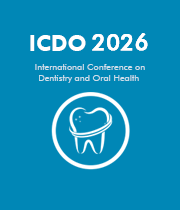Title: Glandular odontogenic cyst: A case series
Abstract:
Introduction: Glandular Odontogenic Cysts (GOCs) are considered a rarity in their cystic classification, histologically characterised by an epitheial lining of salivary or glandular nature. What makes them so interesting in dentistry stems from their benign yet aggressive behaviour and recurrence potential. Despite variation in literature, there is evidence to suggest up to a 30% recurrence rate following enucleation and curettage- the first line management, where possible [1]. They pose a diagnostic challenge in the dental world due to similarities in clinical and histopathological presentation to lateral periodontal, botryoid odontogenic, radicular, residual (with mucous metaplasia) and low-grade mucoepidermoid cysts [2].
Objectives: The purpose of this case series is to describe the clinical presentation of different presentations and management outcomes of GOCs within the Oral Surgery Department at the Edinburgh Dental Institute (EDI). These occurred in relative temporal proximity to one another.
Case Description: The cases involve a 52-year-old female and a 77-year-old female referred urgently by their general dental practitioners to the Oral Surgery Department at the EDI. The former involved an asymptomatic incidental radiolucent finding on a right bitewing between the mandibular second premolar (FDI 45) and first molar (FDI 46). The latter, a feeling of pressure in the upper right maxilla with a history of self-resolved altered sensation. Management differed for both cases. The 52-year-old was managed within the EDI, receiving biopsy, diagnostics, marsupialisation and subsequently enucleation. The 77-year-old was referred to Oral and Maxillofacial Surgery where enucleation and curettage was the first line management. Both cases are currently under monitoring and review considering the risk of recurrence.
Conclusion: These back-to-back cases within the department have helped build a better diagnostic picture of a GOC where multidisciplinary department meetings involving dental radiology and pathology have been of significant input. Whilst the initial management for both cases differed, the intended outcome remained the same: how do we prevent recurrence considering this cyst type’s aggressive presentation whilst maintaining and protecting as much of the patient’s dentition as possible?




